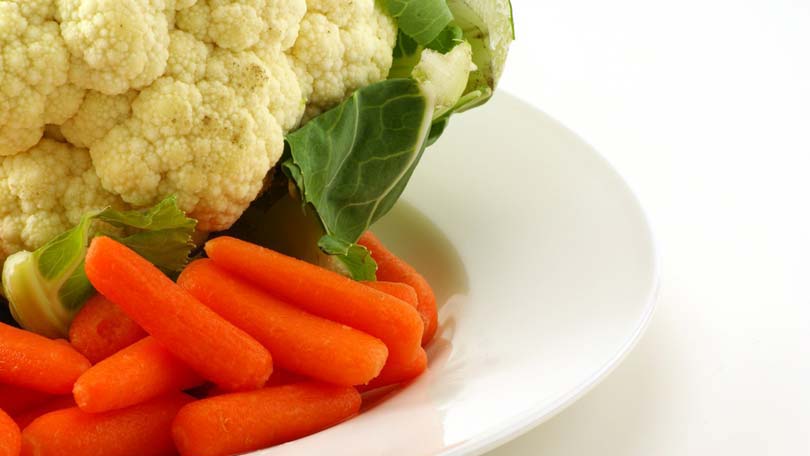
Cauliflower isn’t just a delicious vegetable; it actually has many nutritional benefits including cures or treatments for some ailments. The cauliflower has original characteristics that make it unique, it is like no other vegetable you’ve ever ate. Growing cauliflower can be tricky; however, if you follow the recommended steps provide here, it will be easy to grow fresh cauliflower in your garden.
The Nutritional Value of Cauliflower
Cauliflower is a very nutritious vegetable. It is extremely high in vitamin C and is a reasonable source for vitamin K, folate, and dietary fiber. It also contains some types of vitamin B as well as omega 3 fatty acids, potassium, protein, phosphorus, and magnesium. It is naturally low in calories, and if it is cooked without adding additional calories (like if it is boiled), a cup of cauliflower is only about twenty-eight calories.
The Miraculous Mystery of Cauliflower
Cauliflower is said to cure or treat many ailments, as well as helping a body to resist cancer. It is supposed to help the body to detoxify as well as providing a resistance to rheumatoid arthritis. It seems to be a really incredible vegetable. There are some warnings about cauliflower as it seems to complicate things for people who have thyroid or kidney problems and other health problems that include an imbalance of uric acid. Anyway, if you have concerns about any of these things, it is worth looking into to get more information to decide whether it’s good for you or bad for you.
Its Characteristics
Cauliflower has traits that are quite original. It is in the same family as cabbage, broccoli and kale, but it is really different in appearance, texture and taste. The head of the cauliflower is edible while the rest of it is thrown away. It is much like broccoli with the head being buds that haven’t bloomed when it is harvested. The head of a cauliflower plant is usually white and it is called a curd. It attached to a stalk and has leaves around it. There are different kinds of cauliflower that are green, purple and orange, but the white cauliflower is most common. When eaten raw it is crunchy; but it can be steamed, boiled or sautéed which changes the texture. It can also be pickled. It has a unique taste that is kind of nutty and sweet.
How to Grow Cauliflower
Growing cauliflower can be challenging when compared to other vegetables in the cabbage family. It is a cool-season vegetable, best planted to be harvested in the early summer before it gets too hot, or in the fall. The cauliflower plants should be planted in an area that hasn’t grown members of the family for at least four years. If you take this precaution, you will side-step exposure to clubroot, which is a disease that often affects cauliflower crops.
The soil that is ideal for cauliflower is fertilized with manure, nitrogen, boron and magnesium. You can usually find commercial fertilizers that contain these elements. If not, you can buy the elements from any garden center and add it to your fertilizer.
It is best to plant transplants rather than seeding cauliflower. If you choose to grow them from seed, you can start the seedlings indoors about six weeks before planting season. The plants should be set eighteen inches apart in rows that are about two and half feet apart. After they are planted, it does good to water them with a starter solution.
Throughout the growing season, you need to keep the soil moist and dress the plants with nitrogen fertilizer about every two to three weeks. When the heads start to develop, tying the leaves together so that they cover the head will keep the heads white until harvest time.
You may some problems with pests. Cabbage root maggots, cabbage loopers, cabbage worms, and aphids are the most common troublesome insects in cauliflower patches. Insecticides that are made to control them can be found in dust or spray.
To harvest cauliflower, you use a sharp knife to cut the stalk when the florets of the head have started to open. After you harvest the head, the rest of the plant is no good because they won’t reproduce. When storing the cauliflower, be sure and leave the leaves on it until you get ready to use it. You can usually store cauliflower for about three weeks if you keep them wet.
Excess cauliflower can be frozen. It needs to be washed well with salt water or a mixture of white vinegar and water. Cut off the flowerets and blanch them in boiling water for about three minutes. Cool them and bag them in freezer bags for future use.
